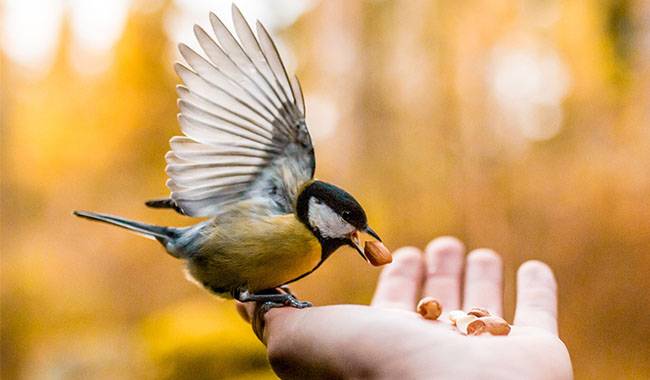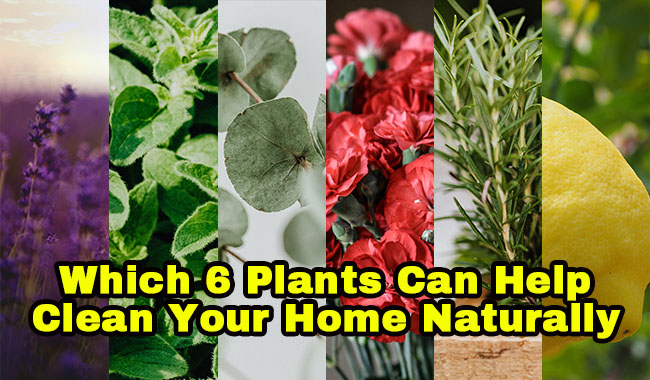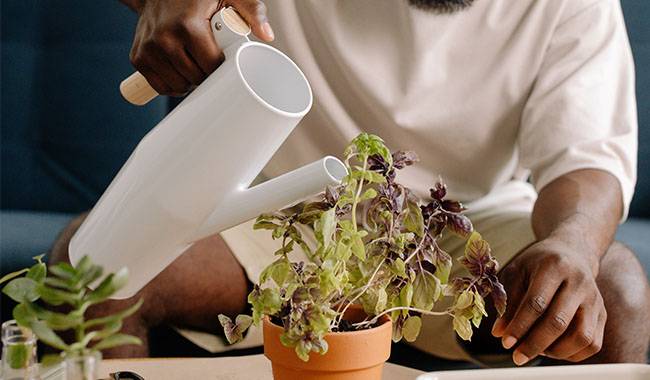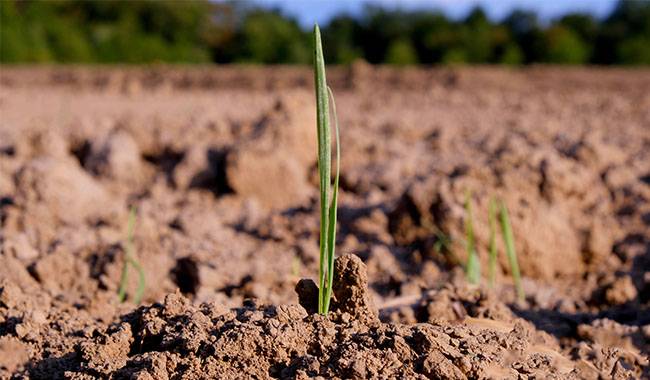
Seed germination refers to a series of orderly physiological processes and morphogenesis of seeds from imbibition.
The seed germination requires the right temperature, the right amount of moisture, and sufficient air. When seeds germinate, they first absorb water.
After the seeds are soaked in water, the seed coat will swell and soften, allowing more oxygen to penetrate the seed coat into the inside of the seed, and at the same time carbon dioxide will be discharged through the seed coat, and the physical state inside will change;
The second is air. A series of complex life activities carried out by seeds during the germination process. Only when the seeds continue to breathe and get energy can they ensure the normal progress of life activities;
Finally, the temperature is too low, the respiration is inhibited, the decomposition of nutrients inside the seed, and a series of other physiological activities need to be carried out at a suitable temperature.
Self-conditions for seed germination
1.The seed must have vitality and a complete embryo
A seed that has an embryo bitten by an insect cannot germinate. After the seed leaves the mother’s body, it will lose its vitality for more than a certain time and cannot germinate. For different seeds, the life span is different.
For example, a willow seed only lasts 12 hours, but peanut seeds can live up to 1 year, wheat seeds and rice seeds generally live 3 years, and cabbage seeds and broad bean seeds can live 5-6 years.
2.Have sufficient nutritional reserves
Normal seeds store sufficient nutrients for seed germination in the cotyledons or endosperm, and shriveled seeds often fail to germinate due to lack of sufficient nutrients.
3.Not in a sleep state
After most seeds are formed, they cannot germinate temporarily even under suitable conditions. This phenomenon is called dormancy.
The main reason for formation:
- Seed coat disorder. The seed coat of some seeds is thick and hard, or a waxy layer or stratum corneum is attached to the seed coat, making it impermeable, airtight, or mechanically obstructing the embryo.
- Some fruits or seeds contain substances that inhibit seed germination.
For example, in the long-term life of some desert plants, in order to adapt to the arid environment, there are water-soluble inhibitory substances on the surface of the seeds. Only after a large amount of rainfall, these inhibitory substances can be washed off before they can germinate, ensure that the formed seedlings will not die due to lack of water
For dormant seeds, if it is necessary to promote germination, the dormancy should be lifted for different reasons.
External influence conditions for seed germination
The external conditions for the germination of seeds, in addition to the seeds themselves having a sound germination ability and the release of dormancy, also require certain environmental conditions, mainly sufficient water, suitable temperature, and sufficient oxygen.
1.Sufficient moisture
The water content of dormant seeds generally only accounts for about 10% of the dry weight. The seed must absorb enough water to initiate a series of enzyme activities and begin to germinate.
Different seeds absorb different amounts of water during germination. Seeds with more protein, such as legume soybean seeds and peanut seeds, absorb more water;
However, cereal seeds such as wheat seeds and rice seeds mainly contain starch and absorb less water. Generally, seeds have a critical value for water absorption, below which they cannot germinate.
Generally, seeds must absorb 25%-50% or more of their own weight in order to germinate. For example, 40% of rice seeds, 50% of wheat seeds, 52% of cotton seeds, 120% of soybean seeds, and 186% of pea seeds %.
The difference in water absorption during seed germination is caused by the different ingredients contained in the seed. In order to meet the needs of water during the germination of seeds, it is necessary to sow seeds in a timely manner in agricultural production and cultivate intensively to create good water absorption conditions for seed germination.
2.Suitable temperature
The germination of all kinds of seeds generally has three base temperature, the lowest, the most suitable, and the highest. Germination of temperate plant seeds requires a lower temperature range than tropical plants.
For example, the three base point temperatures for germination of a plant of temperate origin are 0~5℃, 25~31℃, 31~37℃;
The three base points of plant rice of tropical origin are 10~13℃, 25~35℃, and 38~40℃ respectively.
There are also many plant seeds that are easier to germinate under varying temperatures day and night than under constant temperature conditions.
For example, the germination rate of small furfur seeds is 53% at 21°C and only 72% at 28°C, but the germination rate can reach 95% when the day and night temperature alternately changes between 28°C and 21°C.
The temperature required for seed germination is often different due to other environmental conditions (such as moisture), and the optimum temperature for the growth of roots and sprouts is also different.
Different plant seeds have a certain optimum temperature for germination. Higher or lower than the optimum temperature, germination will be affected.
When the optimum temperature is exceeded to a certain limit, only part of the seeds can germinate. The temperature during this period is called the maximum temperature;
When the temperature is lower than the optimum temperature, the seed germination is gradually slow, and only a small part barely germinates when reaching a certain limit. The temperature during this period is called the minimum temperature.
After understanding the optimum temperature for seed germination, you can select the appropriate season for sowing according to the growth and development characteristics of the plant.
3.Sufficient oxygen
After the seeds absorb water, the respiration function increases, and the oxygen demand increases. Generally, crop seeds require more than 10% oxygen in the surrounding air to germinate normally.
Also called oilseeds, seeds such as soybeans and peanuts require more oxygen during germination. Most seeds cannot germinate when the air oxygen content is below 5%.
Excessive soil moisture or soil slabs will reduce soil voids and poor ventilation, which will reduce the oxygen content of the soil air and affect seed germination.
4.Plenty of sunlight
Generally, the germination of seeds (a few plants) has little relationship with light, and it can proceed normally in dark or light conditions. However, there are a few seeds of plants that need to be lighted to germinate well, such as yellow banyan, tobacco, and tobacco. The seeds of lettuce cannot germinate in the absence of light. This kind of seed is called the need for light seed.
The seeds of some plants, such as bluegrass, Oenothera bonuses, and mullein of the genus Evening Primrose, germinate better under light conditions.
The germination of seeds of some Liliaceae, onions, tomatoes, and Datura is inhibited by light. Such seeds are called photophobic seeds.
The light-needed seeds are generally very small, and the storage material is very small. Only when the soil surface has light conditions, can the seedlings emerge quickly for photosynthesis and will not die due to exhaustion of nutrients.
The opposite is true for light-susceptible seeds because they cannot germinate on the surface of the soil where there is light, which prevents the seedlings from drying out due to insufficient surface soil moisture. In addition, some plants, such as lettuce, have photoperiods in their seed germination.
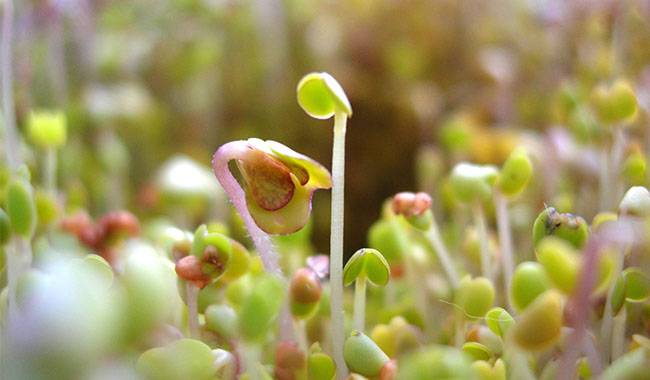
Methods of seed germination
- Soak seeds in cold or warm water. Seeds that are easier to germinate can be soaked in cold water or warm water (35-40°C) before sowing, and after the seed coat becomes soft, take it out for sowing.
- Contusion of the seed coat. The seed coats of lotus and canna are hard and not easy to absorb water. You can grind or scratch the seed coats with a knife, and then soak the seed with warm water (35~40℃). After the seed coat becomes soft, take it out and sow.
- Acid and alkali treatment. Use acid and alkali to treat the seeds to corrode the seed coat, and wash the agent with water after treatment.
- Pharmaceutical treatment. The morning glory seeds are soaked with 10-250 mg/L gibberellin solution before sowing, which can replace the effect of low temperature and promote its germination.
- Ultrasonic treatment.
- Frozen or low-temperature stratification method. For flower seeds that require completion of the dormant period under low temperature and humid conditions, it has a significant effect on promoting germination.




